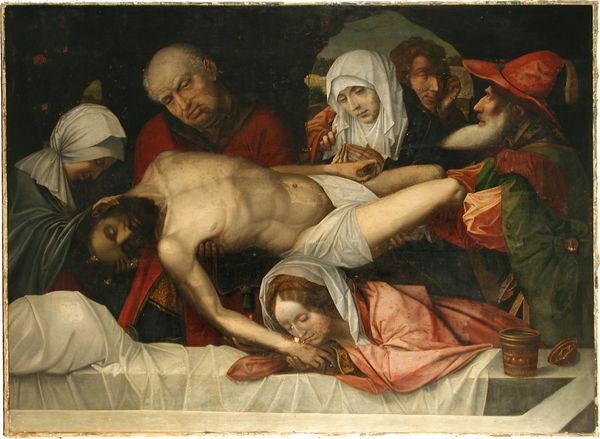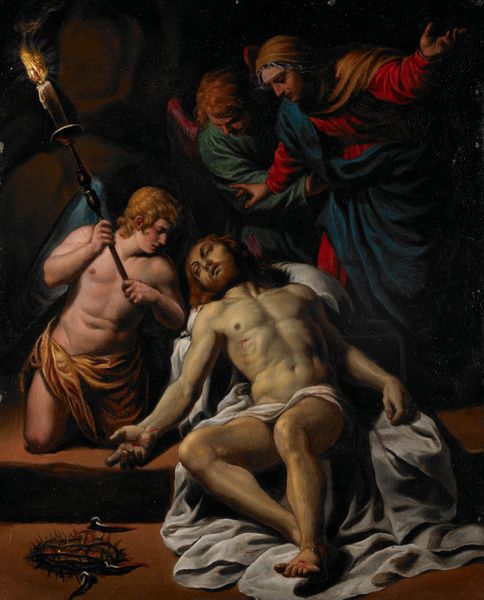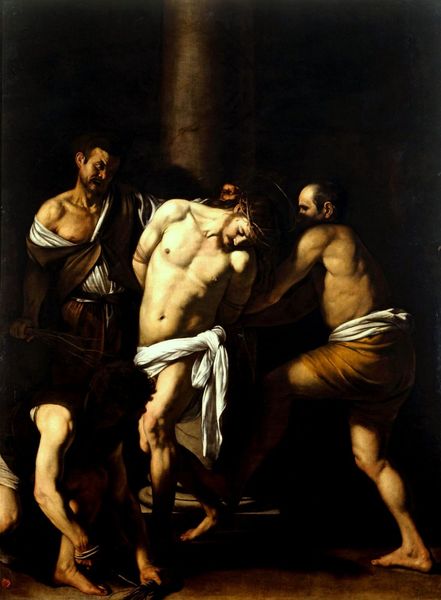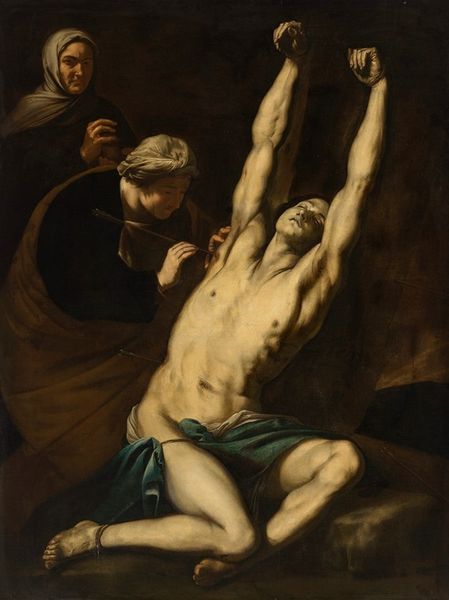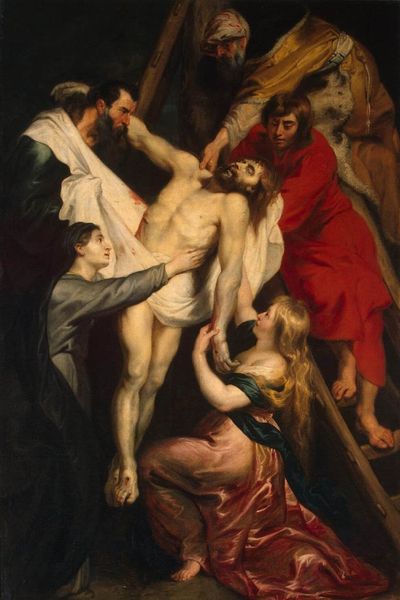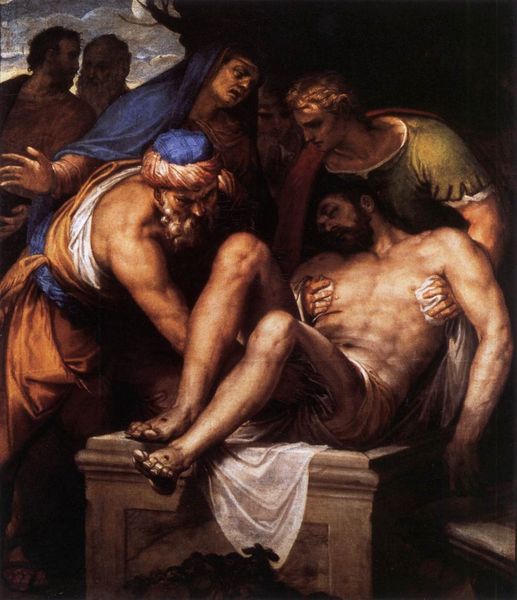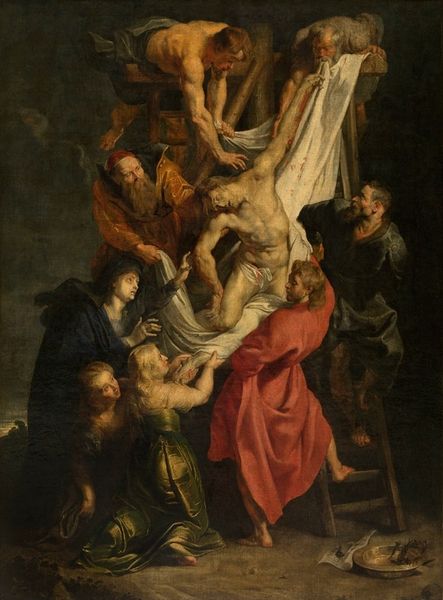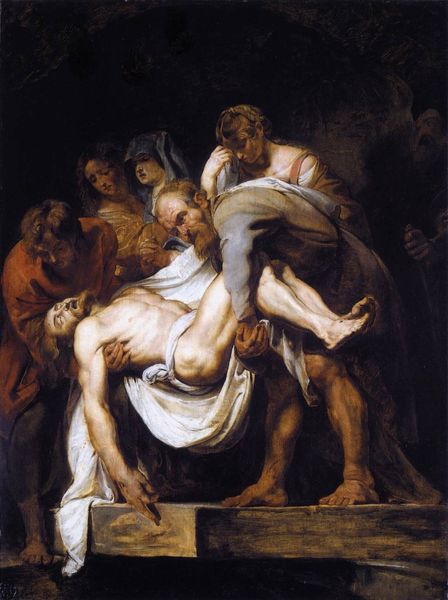
#
impressionist
#
green tone
#
neo expressionist
#
underpainting
#
muted green
#
facial painting
#
figurative photography
#
surrealist
#
fine art portrait
#
expressionist
Copyright: Public Domain: Artvee
Curator: Caravaggio's "The Entombment of Christ," created between 1602 and 1604, arrests my attention immediately. What’s your initial reaction to it? Editor: The darkness is palpable. It feels like grief, heavy and suffocating. Everyone's eyes are either averted or cast skyward; the collective suffering is visceral. Curator: Absolutely. Think about Caravaggio's innovative use of chiaroscuro. He’s not just depicting a scene but constructing a space using light and shadow. Look at the figures; they're emerging from this almost void, emphasizing their physicality. His focus on the common laborers bearing Christ down the slab emphasizes process as well as sacrifice, what do you think? Editor: The positioning is so intentional, guiding us to those grief-stricken faces and then down the slab. It makes the viewer complicit. Notice the upraised hands; such an old symbol for surrendering, but Caravaggio has tweaked it here, they convey the weight of loss rather than faith. Curator: And see the stratum? The coarse stone of the tomb contrasts sharply with the polished flesh of Christ. His realism borders on brutal. There is an emphasis on earthly materials. It reflects the period's intense theological debates on the nature of transubstantiation, the earthly components, against something unprovable. Editor: Exactly, this raw, human aspect elevates the figures to icons of shared pain and endurance. Curator: There’s so much at stake here: the depiction of the body, the materiality of the paint, the very physical act of creating this scene challenges assumptions of art as merely representing beauty or an otherworldly transcendence. Editor: A very somber interpretation indeed. To see such anguish laid bare like this and the dark atmosphere Caravaggio chose—we grasp humanity’s inherent frailty in a whole new light. Curator: I agree, the piece serves as an incredible lens to view both the means and significance of our suffering.
Comments
No comments
Be the first to comment and join the conversation on the ultimate creative platform.


